Yesterday, the NTSB released an investigation update on the United 328’s P&W engine failure, that happened shortly after the flight departed Denver.
The NTSB’s update is a very extensive report on the United incident. It is very useful because a lot of the information we read after the incident, were assumptions relating to previous engine failures. This update confirms some of them, and clarifies more. But it’s important to note that this is far from a final report. The metallurgical examination, in particular, will take considerably more time.

The incident happened as the flight climbed out of Denver. The aircraft had taken off from runway 25 at KDEN, at 13:04 local time. The Captain was pilot-flying. The Boeing 777 was over Broomfield as it reached 12,500 feet. The NTSB update now tells us that the United crew increased thrust at that point. This was because they expected turbulence ahead, as they would begin to fly over the Rockies. So they increased thrust to minimize the time the aircraft would spend in it.
The Incident
The NTSB update indicates that the engine mishap happened just as the United crew advanced the throttles. The CVR (cockpit voice recorder) registered a loud bang, while the FDR (flight data recorder) indicated an uncommanded shutdown on the right engine. The engine fire warning soon followed. The crew immediately leveled off and declared an emergency. They also discharged both fire bottles into the engine. However the fire warning didn’t stop until later in the flight.
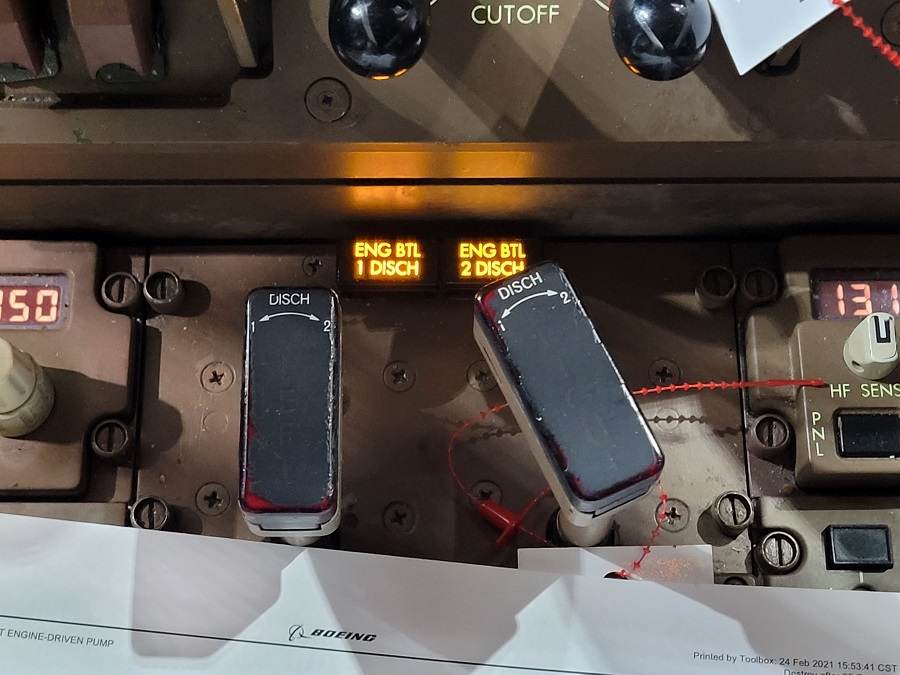
As the United crew prepared for their landing the NTSB update explains that they elected not to dump fuel. This was to save time and for safety reasons. Also, the overweight landing would not be severe enough to cause concern. The Boeing 777 continued for its landing at runway 26, in the hands of the captain. He stopped the aircraft on the runway, where the fire crews hit the right engine with foam and water. This was because the fire on it had flared up.
That last-minute drama out of the way, ground crews towed the aircraft off the runway and onto a remote stand. There the passengers disembarked and were taken to the terminal. Denver-based NTSB crews soon responded to the United incident, the update explains. Three of them collected debris from parts of the town of Broomfield, over several days.
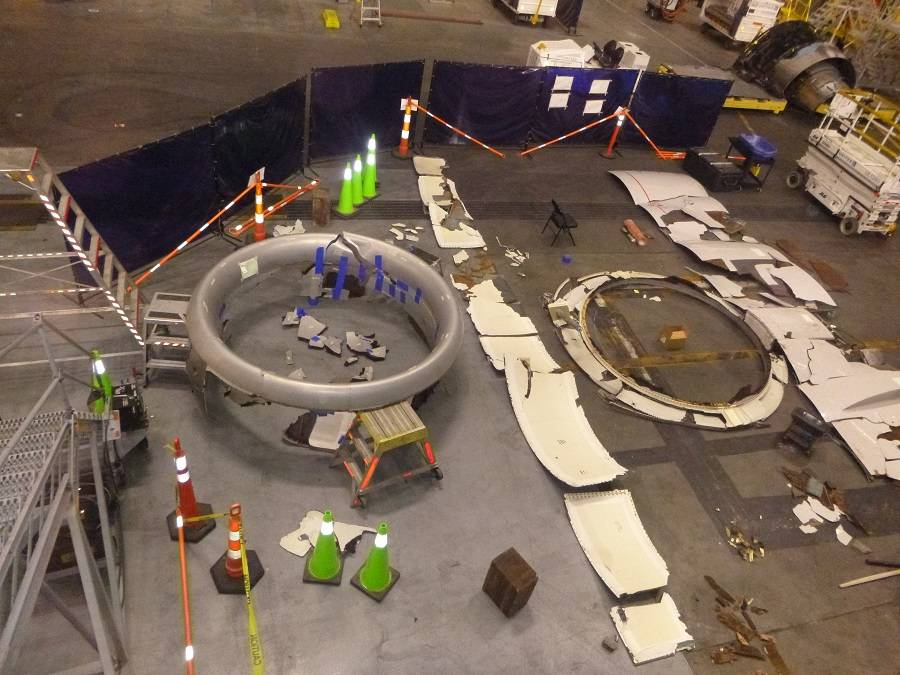
A previous assumption was that it wasn’t fuel that was feeding the engine fire. The NTSB’s United update now suggests this was indeed the case. Pulling the fire handle had closed the supply of fuel to the engine. The fire handle in the cockpit and the relevant lights confirmed the crew’s actions. A lot of fuel, oil and hydraulic lines on the engine showed extensive damage.
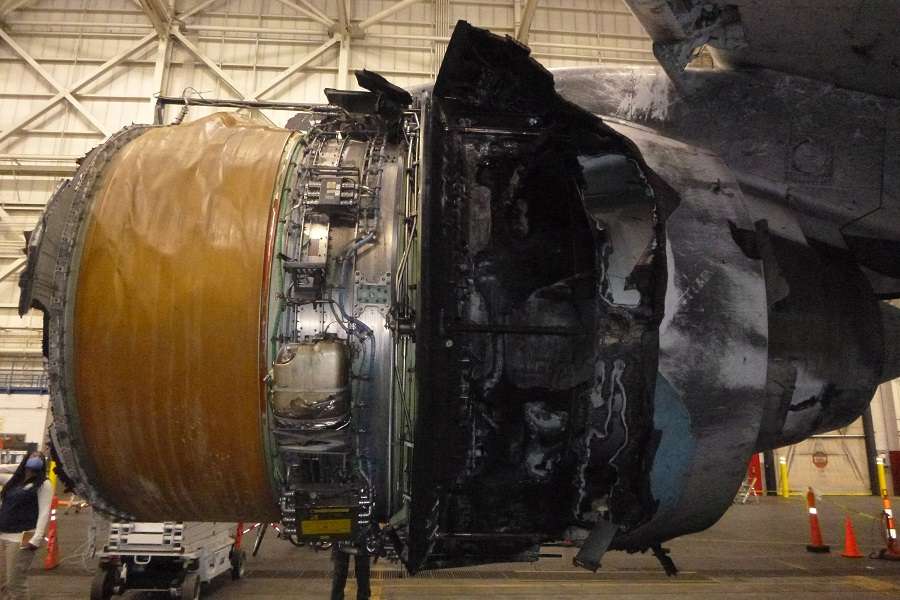
NTSB Update On United’s P&W Engine
The engine’s fan would not turn by hand after the landing. Nothing in the fan hub had worked lose, to cause the incident. The update explains how the NTSB team examined the two fractured blades in United’s 777. The blade that fractured near the root (5”-7.5” – 127-191mm away) showed signs of fatigue. The second blade fractured further towards the middle, 24”-26” – 610-660mm from the root. This fracture was consistent with overload failure. In other words, the first blade struck and broke the second.
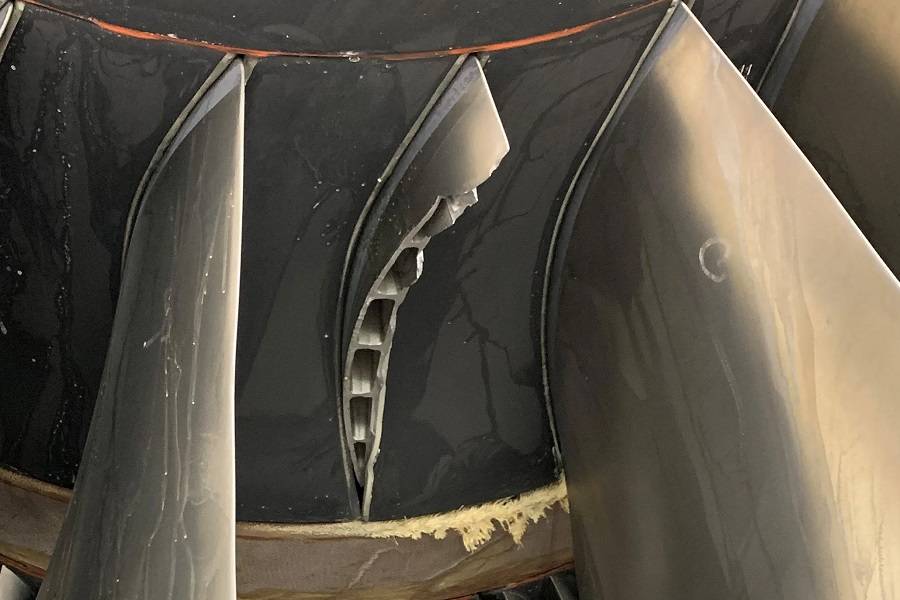
The rest of the blades were still in place but showed impact damage. The investigators removed the blades from the hub and sent the one showing fatigue fractures for analysis. The metallurgical lab used was Pratt & Whitney’s. More updates will follow as the NTSB analyzes the United blades further. However, preliminary findings under an electron microscope (SEM) show multiple fatigue fracture origins. These were on the interior surface of the hollow blade.
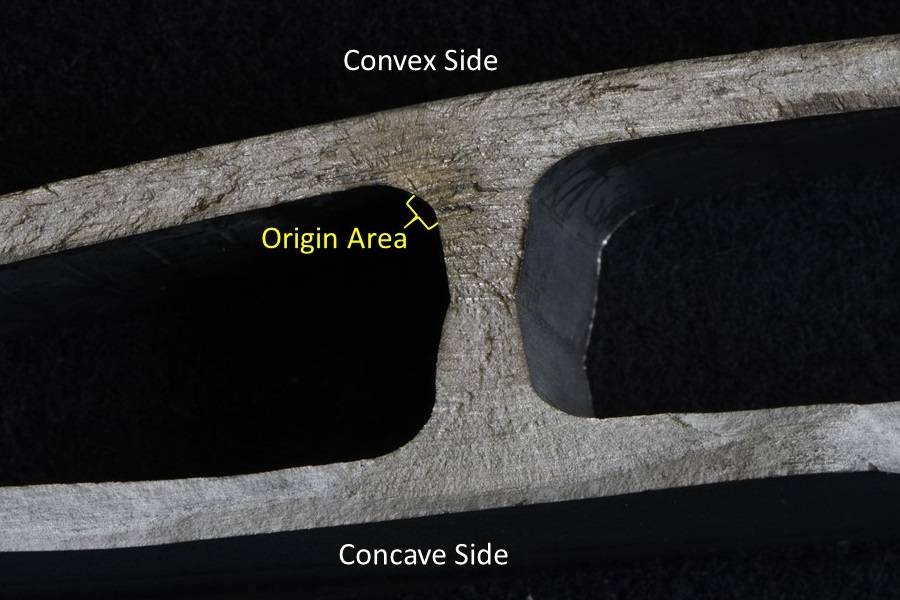
The findings on this update are consistent with those of the 2018 NTSB report on the first United 777 incident. The update goes further, the describe Pratt & Whitney’s actions, including changes to the frequency of testing for the blades. The one showing fatigue fractures had 2,979 cycles since its last inspection. That inspection was in 2016, the one before it on 2014. The 2016 inspection data was reviewed again in 2018, after the previous United 777 P&W engine failure.
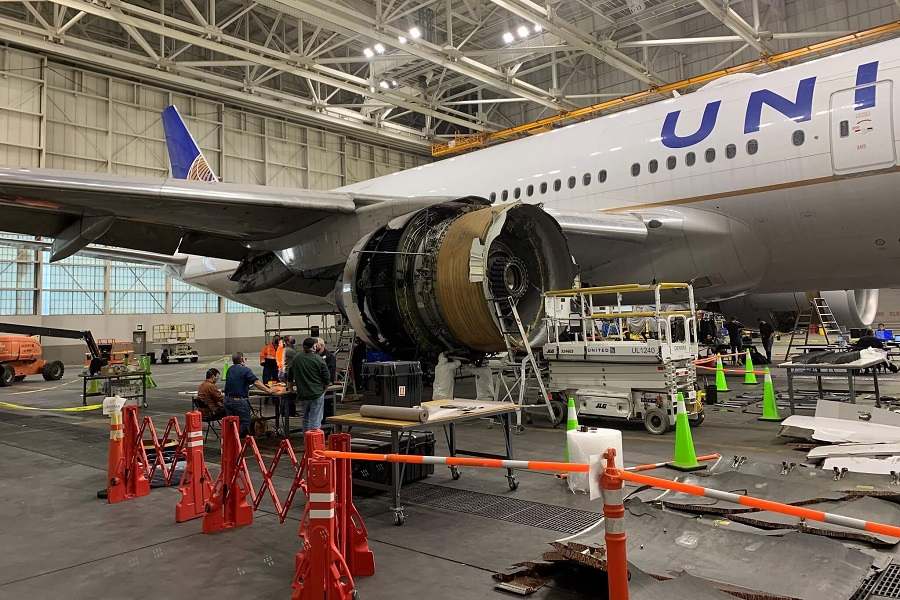
Needless to say, the NTSB is going through that 2016 data again.
For the full text of the NTSB update, click here.




1 comment
Andre T
Expecting more detailed article.
Article states confirms fuel wasn’t feeding fire since crew action cut fuel supply. Was this NSTB conclusion or article author conclusion? There is residual fuel in system such fueldraulic system that can feed fire if tube were cracked for ruptured. Oil is other likely contributor having an oil tank. With the engine windmilling both oil and fuel pumps likely pumped fluids to cracked tubing. Interesting if this fire leads to engine design change recommendations for failures like this to limit windmilling or adding measures to cut fluid flow from pumps.
Second, what was the overall cycles on the blades? We have cycles between inspection. But how about overall cycles? Is there common cycle age?